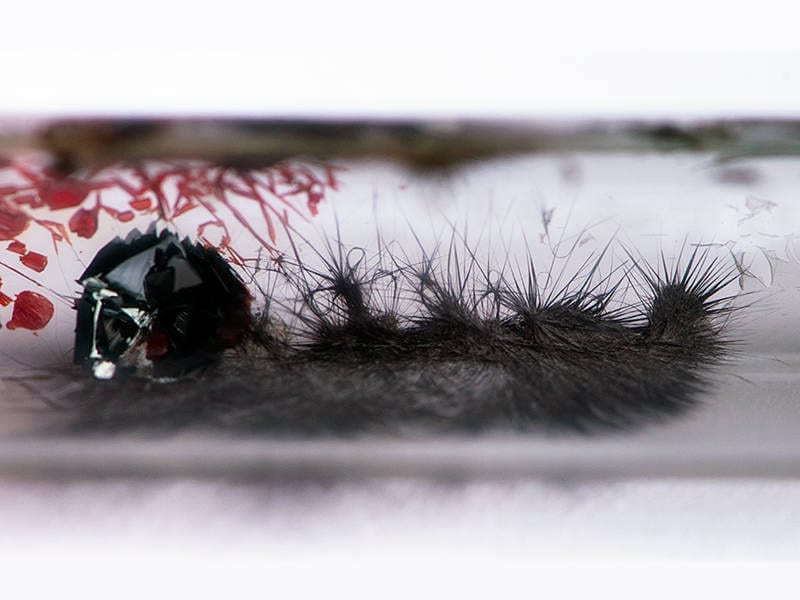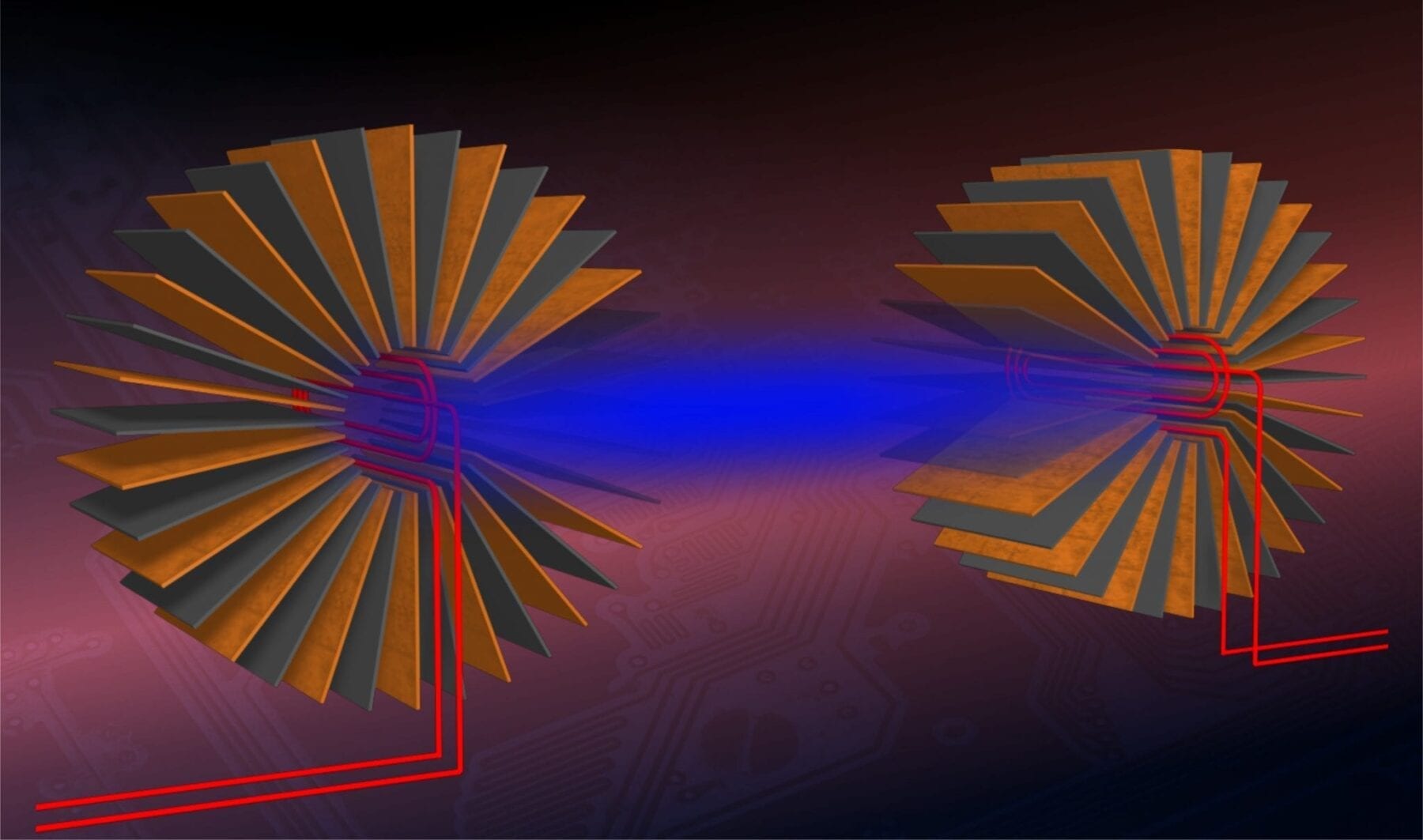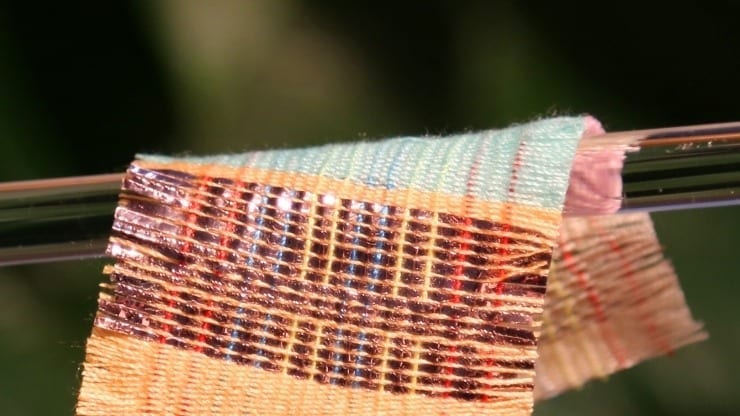
A flexible semiconductor for electronics, solar technology and photo catalysis
It is the double helix, with its stable and flexible structure of genetic information, that made life on Earth possible in the first place. Now a team from the Technical University of Munich (TUM) has discovered a double helix structure in an inorganic material. The material comprising tin, iodine and phosphorus is a semiconductor with extraordinary optical and electronic properties, as well as extreme mechanical flexibility.
Flexible yet robust – this is one reason why nature codes genetic information in the form of a double helix. Scientists at TU Munich have now discovered an inorganic substance whose elements are arranged in the form of a double helix.
The substance called SnIP, comprising the elements tin (Sn), iodine (I) and phosphorus (P), is a semiconductor. However, unlike conventional inorganic semiconducting materials, it is highly flexible. The centimeter-long fibers can be arbitrarily bent without breaking.
“This property of SnIP is clearly attributable to the double helix,” says Daniela Pfister, who discovered the material and works as a researcher in the work group of Tom Nilges, Professor for Synthesis and Characterization of Innovative Materials at TU Munich. “SnIP can be easily produced on a gram scale and is, unlike gallium arsenide, which has similar electronic characteristics, far less toxic.”
COUNTLESS APPLICATION POSSIBILITIES
The semiconducting properties of SnIP promise a wide range of application opportunities, from energy conversion in solar cells and thermoelectric elements to photocatalysts, sensors and optoelectronic elements. By doping with other elements, the electronic characteristics of the new material can be adapted to a wide range of applications.
Due to the arrangement of atoms in the form of a double helix, the fibers, which are up to a centimeter in length can be easily split into thinner strands. The thinnest fibers to date comprise only five double helix strands and are only a few nanometers thick. That opens the door also to nanoelectronic applications.
“Especially the combination of interesting semiconductor properties and mechanical flexibility gives us great optimism regarding possible applications,” says Professor Nilges. “Compared to organic solar cells, we hope to achieve significantly higher stability from the inorganic materials. For example, SnIP remains stable up to around 500°C (930 °F).”
JUST AT THE BEGINNING
“Similar to carbon, where we have the three-dimensional (3D) diamond, the two dimensional graphene and the one dimensional nanotubes,” explains Professor Nilges, “we here have, alongside the 3D semiconducting material silicon and the 2D material phosphorene, for the first time a one dimensional material – with perspectives that are every bit as exciting as carbon nanotubes.”
Just as with carbon nanotubes and polymer-based printing inks, SnIP double helices can be suspended in solvents like toluene. In this way, thin layers can be produced easily and cost-effectively. “But we are only at the very beginning of the materials development stage,” says Daniela Pfister. “Every single process step still needs to be worked out.”
Since the double helix strands of SnIP come in left and right-handed variants, materials that comprise only one of the two should display special optical characteristics. This makes them highly interesting for optoelectronics applications. But, so far there is no technology available for separating the two variants.
Theoretical calculations by the researchers have shown that a whole range of further elements should form these kinds of inorganic double helices. Extensive patent protection is pending. The researchers are now working intensively on finding suitable production processes for further materials.
Learn more: Inorganic double helix
The Latest on: Inorganic double helix
[google_news title=”” keyword=”Inorganic double helix” num_posts=”10″ blurb_length=”0″ show_thumb=”left”]
via Google News
The Latest on: Inorganic double helix
- Helix Coupon Codeson May 3, 2024 at 5:01 pm
Molly Higgins is a product/content reviewer and contributing producer at WIRED. She graduated with a bachelor’s degree in English from UCLA and an MFA in creative nonfiction writing from the ...
- PC Connection, Inc. (NASDAQ:CNXN) Q1 2024 Earnings Call Transcripton May 2, 2024 at 9:31 am
Q1 2024 Earnings Call Transcript May 1, 2024 PC Connection, Inc. misses on earnings expectations. Reported EPS is $0.5 EPS, expectations were $0.64. CNXN isn’t one of the 30 most popular stocks among ...
- Organic and Inorganic Substanceson April 24, 2024 at 5:00 pm
Chemistry has also been divided into two distinct departments, simply because of the supposed differences between the deportment and composition of organized bodies and inorganic bodies.
- Neuroscientists Discover Shapeshifting DNA Controls Memory Formationon April 17, 2024 at 9:16 am
If you were asked to picture a molecule of DNA, chances are you would visualize a long, straight, right-handed double helix—the type you were taught in science class. It's well established that ...
- Helix Dusk Luxe Mattress Review 2024: A Comfortable Pillow-Top Bedon April 16, 2024 at 2:00 pm
Helix Sleep has an extensive lineup of mattresses. CNET's sleep experts have tested the versatile Helix Dusk Luxe, and here's what we think about it. A certified sleep science coach and mattress ...
- Inorganic Chemistryon October 21, 2023 at 5:49 pm
Inorganic chemistry is concerned with the properties and behavior of inorganic compounds, which include metals, minerals, and organometallic compounds. While organic chemistry is defined as the study ...
- Inorganic Chemistry Frontierson July 29, 2023 at 9:19 pm
All original research work published in Inorganic Chemistry Frontiers will be in one 'Research article' format. Both Communications and Full papers can be published in the same format. Innovative ...
- Inorganic Reaction Mechanisms Groupon February 4, 2022 at 2:24 am
Scope The Group is concerned with all aspects of the fundamentals, methodologies (experimental, computational and theoretical) and applications of inorganic reaction mechanisms, that is of the ...
- How to Draw a Double Helix in Illustratoron August 17, 2020 at 2:51 pm
A double helix is made of two spiraling lines that are intertwined together. A famous example of a double helix is the structure of a DNA molecule. You can draw a ...
via Bing News










